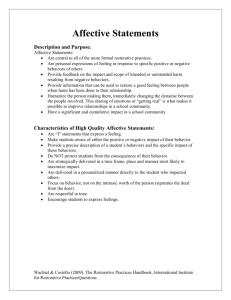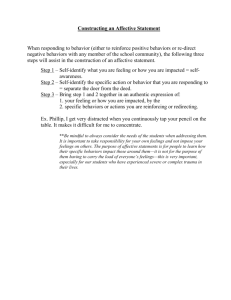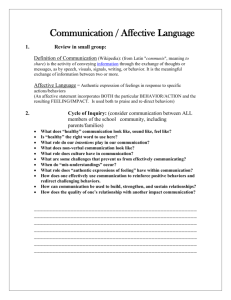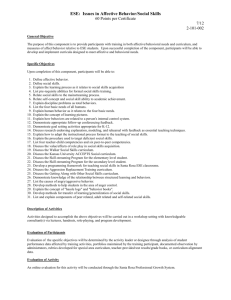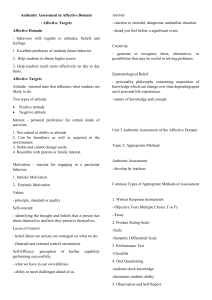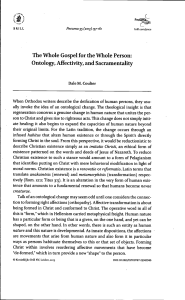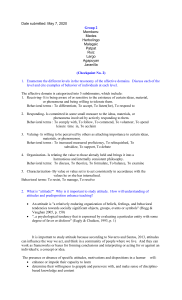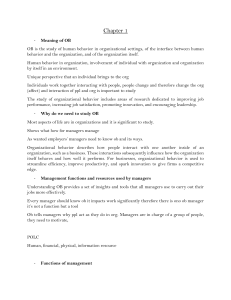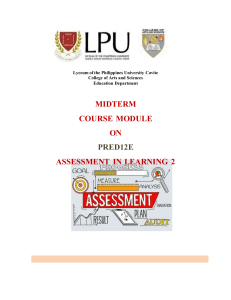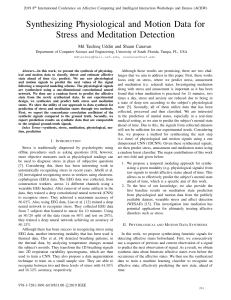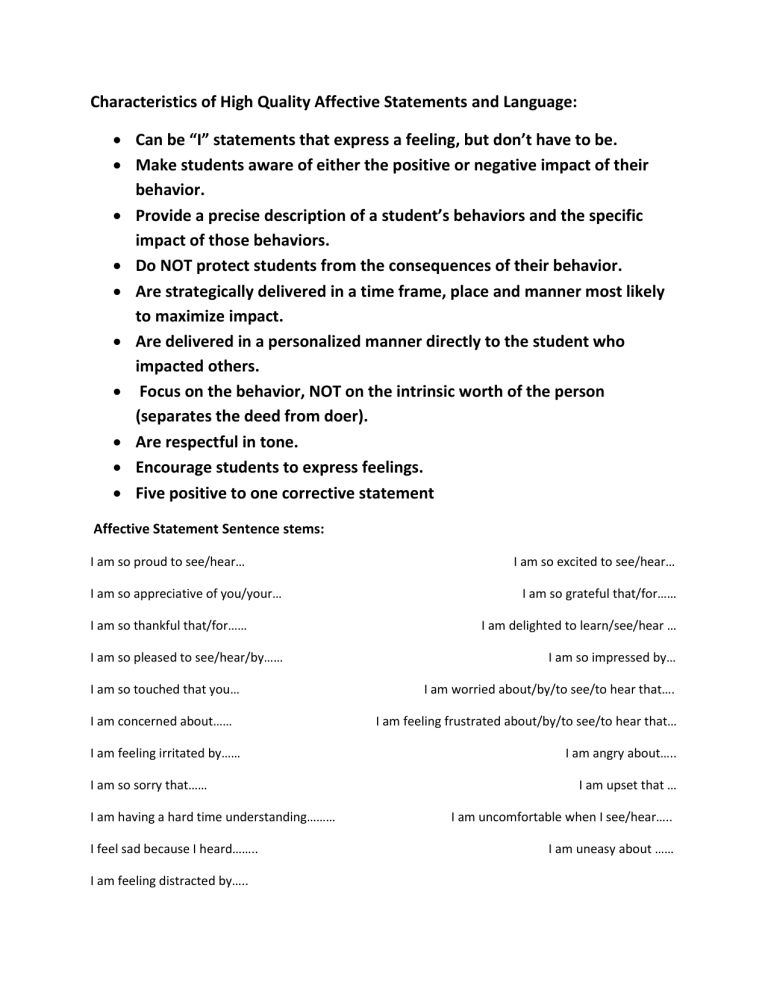
Characteristics of High Quality Affective Statements and Language: Can be “I” statements that express a feeling, but don’t have to be. Make students aware of either the positive or negative impact of their behavior. Provide a precise description of a student’s behaviors and the specific impact of those behaviors. Do NOT protect students from the consequences of their behavior. Are strategically delivered in a time frame, place and manner most likely to maximize impact. Are delivered in a personalized manner directly to the student who impacted others. Focus on the behavior, NOT on the intrinsic worth of the person (separates the deed from doer). Are respectful in tone. Encourage students to express feelings. Five positive to one corrective statement Affective Statement Sentence stems: I am so proud to see/hear… I am so appreciative of you/your… I am so thankful that/for…… I am so pleased to see/hear/by…… I am so touched that you… I am concerned about…… I am feeling irritated by…… I am so sorry that…… I am having a hard time understanding……… I feel sad because I heard…….. I am feeling distracted by….. I am so excited to see/hear… I am so grateful that/for…… I am delighted to learn/see/hear … I am so impressed by… I am worried about/by/to see/to hear that…. I am feeling frustrated about/by/to see/to hear that… I am angry about….. I am upset that … I am uncomfortable when I see/hear….. I am uneasy about ……

